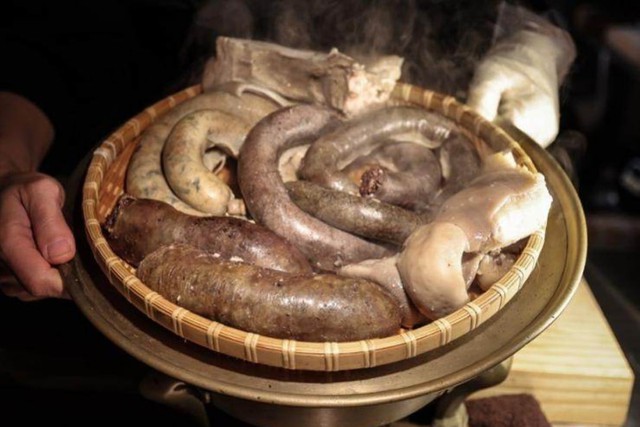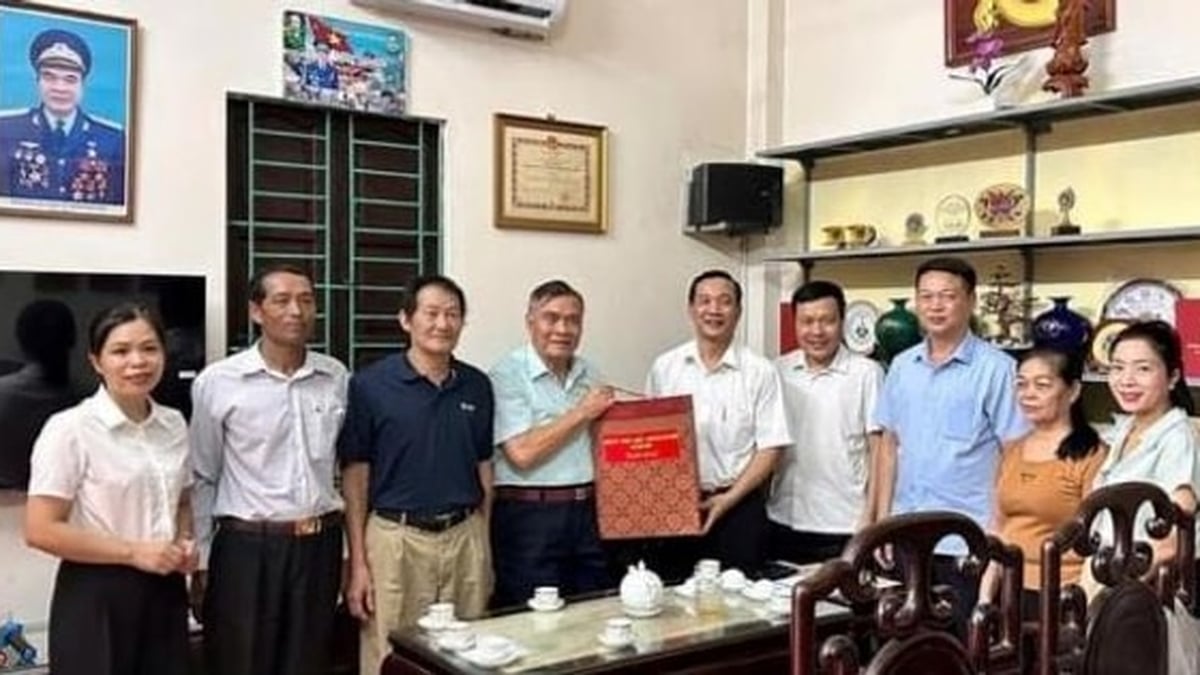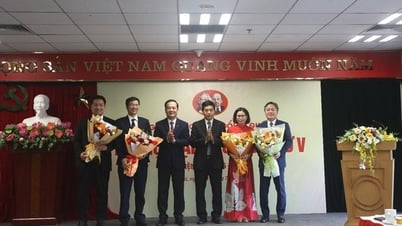Elevating fine dining
Sundae - Korean style blood sausage is a rustic dish and has existed for a long time in this country. This is a favorite Korean street food, specifically steamed pig intestines stuffed with many different ingredients. This dish is not usually found in the luxurious space of a restaurant but is a staple dish in bustling markets, served hot and ready to fill the stomachs of hungry people.

Korean pork sausage. Photo: Lee Buk Bang
Choi Ji-hyung, 37, has elevated the Korean dish "pork blood sausage" to the level of haute cuisine. This is considered a childhood dish of Choi Ji-hyung and his grandmother often cooked this dish.
His sundae omakase restaurant Lee Buk Bang in the Mapo district of western Seoul evokes the comfort and nostalgia of his grandmother’s kitchen. Centuries-old wooden tables, a large cauldron and a traditional Korean kettle encapsulate the culinary journey the chef hopes to bring to his diners.
"My grandmother was a good cook. She made sundae (pork blood sausage), myeongtae sikhae (salted and fermented pollock) and salted pollock roe. I often helped her in the kitchen when I was young. I washed pig intestines and picked vegetables from the garden to make sundae," said Choi Ji-hyung.
"I wanted to create a destination where people can regain energy to heal daily stress from simple but warm dishes like a meal cooked by their grandmother," added Choi Ji-hyung.
With a master's degree in culinary arts from Johnson & Wales University in Providence, Rhode Island (USA), Mr. Choi has worked as a chef in French, Japanese, Italian and American restaurants since 2010, including a two-Michelin-star restaurant.
Returning to Korea in 2017, Choi opened Seogyo Gourmet, a restaurant specializing in sundae and modern Korean cuisine, in 2018.
His restaurant won the Michelin Plate award (awarded to restaurants that are considered high quality but not yet qualified for a Michelin star) in 2019. Mr. Choi's restaurant maintained this award after moving to a new location and changing its name to Lee Buk Bang restaurant in 2021.
"Although my work was quite hard when working at Western restaurants, I still thought it could not compare to the hard work and effort that went into making blood sausage with my grandmother. From preparation to serving as a dish, it took more than 20 hours of hard work. Then I wondered why blood sausage could not be considered a refined, proper dish representing Korean cuisine," said Mr. Choi, thinking about elevating the simplicity of street food to the luxury of fine dining.
Preserving culinary arts
Sundae (pork blood sausage) dates back to Korea's Goryeo Dynasty (918-1392) when wild boar meat was used in the dish. Traditional sundae consists of ingredients such as pig's blood, minced meat, rice and vegetables, and is a favorite dish for special occasions.
After the Korean War (1950–1953) when food became scarce, the meat filling was replaced with more accessible dangmyeon (Korean dried noodles), making sundae an affordable street food.
Mr. Choi's restaurant will offer five types of blood sausage sundae for the meal. Each dish comes with a detailed explanation from the chef about its origins and the stories behind it, along with a recommendation for which of the four spices best complements the blood sausage.
Customers at Lee Buk Bang restaurant are of different ages. While young guests visit to try new things, older guests seek the comfort of nostalgic flavors.
A Korean customer in her 50s was particularly impressed by the pine nut ice cream, recalling her childhood memories of picking pine nuts. Jenna Kwon’s family from the US said they were surprised to find such a modern restaurant in Korea.
When you think of Korean blood sausage, you might not associate it with the word 'sophisticated' or a very trendy and stylish atmosphere, but this restaurant feels completely different, says Jenna Kwon.
“We wanted to try something new. We both really enjoyed Korean food and wanted to try more. This place lived up to our expectations of fine Korean cuisine. Korean food is considered healthy, balanced, filling and delicious. That’s the biggest strength,” she added.
Mr. Choi also said that one of the regular customers at his restaurant is an elderly man from North Korea.
"The food at the restaurant reminded me of my childhood and the meals my mother cooked at home. It was really touching and I felt proud of myself," said Mr. Choi.
Mr. Choi also hopes that his restaurant can contribute to the preservation of culinary arts.
"The older generation - although not many - make sausages in the traditional way. But when these people pass away and the younger generation no longer takes on this hard, labor-intensive job, the next generation may have no choice but to industrialize this type of sausage. So I have a sense of responsibility for my profession," Choi added.
Mr. Choi is also confident in the global appeal of Korean cuisine (hansik), with 20% of his regular customers coming from many countries around the world often returning to enjoy the restaurant.
"On the surface, East Asian cultures look very similar. But Korean, Japanese, and Chinese cuisines are very distinct. Because of this uniqueness, Korean cuisine has the ability to appeal to global taste buds.
"Many Chinese restaurants have penetrated the global culinary scene and Japanese restaurants are considered fine dining. Hansik alone has the potential for its own uniqueness in the future," he added.
Source




































































































Comment (0)